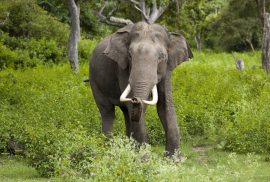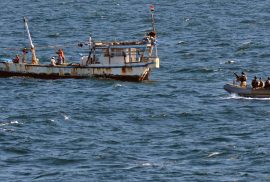In the midst of the global refugee crisis, there has been much discussion regarding the management of refugees and asylum seekers in the developed world, however, this issue has been somewhat overlooked in Indonesia. Historically, Indonesia has been utilised as a transit country, due to its geographical location, archipelago geography, and bureaucratic functioning. This trend has continued in recent years – in 2016, approximately 13,829 refugees arrived in Indonesia. However, whilst Indonesia may still be characterised as a transit country, this reality is quickly changing, particularly as both Australia and the United States, two primary re-settlement nations, have decreased their refugee intake. In 2016, 761 refugees were resettled to the US, and 347 to Australia, almost a 50% decrease in settlement from the previous year. A drop in re-settlement rates, coupled with an inevitable increase in re-settlement waiting periods, has contributed to the transformation of Indonesia’s role as a country that merely acts as a place of transit, to a destination where refugees are now spending a significant amount of time. Given these circumstances, the need for a more robust solution in the Government’s approach and attitude towards refugees has become evident.
Academic Essay
Traffic accidents still remain as a critical problem in Southeast Asia. Based on the report of the ASEAN Regional Road Safety Strategy in 2016, the biggest risk faced by most ASEAN countries is traffic accidents caused by the considerable number of two-wheeled vehicles as the primary transportation. The number of trauma due to traffic accidents is quite high in ASEAN. Compared with other ASEAN countries, Vietnam becomes one of the countries with the highest mortality rate, which is 23,60% of 10,000 per population according to Bloomberg
Changing social layers in society are inevitable things during the globalization era. Technological progress becomes the most observable thing to see. The movement from traditional to modern technology is usually called as modernization. This happens due to the innovations of the world scientists which bring some impacts for the entire layers of society. The positive impact of modernization on human beings can be seen from facilitation in daily activities. For example, labor who initially worked manually to produce goods might take several days to complete. Because of technological support, labor now is able to produce more and faster goods.
Introduction
If there’s one thing that Southeast Asia should be known for, it is one thing; Diversity. This region is the home to many cultures, belief, traditions, cuisines that extends all the way to its rich biodiversity. The region hosted millions of species that ranges from both animals and plants. Many states in this region are in fact, aware of this fact and the notion of this leads majority of states in Southeast Asia to sign and ratify the CITES (Convention on International Trade in Endangered Species of Wild Flora and Fauna 1975 ) within their national legislation, as a measure taken to protect 3000 species of flora and fauna. In Indonesia, CITES has already been ratified into Law no 5 Year 1990 for the conservation of living resources and Ecosystems. The ratification process itself are divided into 3 (three) criteria in which the former one (1) are deemed the most effective, while the latter one is the deemed ineffective (3) due to the lack of alignment between the content within the legislation and the aforementioned conventions.
Introduction
What comes into your mind when you heard the word “pirates?” is it Captain Hook from the Disney movie “Peter Pan” with an eye patch? Is it a hungry and angry guy from Somalia trying to hijack the Maersk Alabama in “Captain Phillips?” However, other than focusing on how the popular media trying to portray how pirates actually looked like, we shall be aware that actual piracy activity is something that is closer to home. In fact, Southeast Asia hosted the most piracy activities due to their fragile geographical location and other relevant socio economic factors. The number elevated in between 1995 – 2013 into being the place for 41% total piracy activities. These numbers are quite high when being compared to Somalia (18%) and West African Coast (13%) .
Rodrigo Duterte came into office as Philippines’s 15th President on June 30, 2016. His approach to South China Sea dispute and his overall foreign policy once shocked many in the region, and more around the world. As his approach to South China Sea dispute differs from his predecessor, Benigno Aquino III (in office 2010-2016), the world is watching what will come out of this diversion.
Under Benigno Aquino III’s presidency, Philippines was very assertive in emphasizing its claim upon the competing claims by several other countries in the South China Sea. During Aquino’s administration, the Philippines brought the case against China to the Permanent Court of Arbitration (PCA) in 2013. The decision came on July 12, 2016, about two weeks after Duterte assumed office.
The crisis in Rakhine State has been there since a long time. Since 1962, during the military regime, the violence on behalf of ethnic and religious has been occurred and caused a miserable tragedy in the Rakhine State, Myanmar. Around 2.000 people have been killed and more than 140.000, approximately, became homeless. Therefore, Myanmar government has violated Human Rights toward the Rohingya. (Human Rights Watch)
Recently, according to the United Nations Refugee Agency, more than 650,000 Rohingya refugees have fled to Bangladesh since the end of August year 2017 to escape violance and persecution in Myanmar. Previously, The Fact Finding Mission of the United Nations showed that approximately 1,3 million people have moved to the Bangladesh border. The rest of Rohingya refugees are trying to move out to another country such as Thailand, Malaysia, and Indonesia. (United Nations, 2018)
Whilst the terms ‘climate change’ and ‘global warming’ are now frequently heard in a number of contexts, whether that be in a professional environment, the classroom, or in your Facebook newsfeed, it can sometimes be difficult to understand why such notions are so alarming – the opportunist may just see these changes as an excuse to flaunt their favourite t-shirt for a few more days a year. However, the ramifications of climate change go far beyond a jacket collecting more dust in your wardrobe. Changes in climate induced by a warming planet are anticipated to spark challenges in social, economic, and political conditions across the globe, particularly within the ASEAN region. In light of this, as a simple game theory model suggests, collaboration of partners within ASEAN, although not always perceived as the easiest and most lucrative path in the short-term, will ultimately be the most rewarding approach, and will play an essential role in harnessing future regional stability and prosperity.
The word ‘transgender’ may be familiar to our ears. This word meant in this article means people who have gender identity or gender expression that is different from the gender they had at birth, from woman to man, or vice versa.
Southeast Asia is one area where religion is the most considered factor, so transgender is often considered to be against the norm. Not infrequently in Southeast Asia, transgender gets discriminated, especially to enjoy a decent life. In fact, they are often forcibly evicted, fired, and so on. In fact, transgender is a human being and a citizen who has human rights. In addition, it must always be remembered that the state is obliged to provide protection to its citizens, without exception. Thus, we need to highlight this transgender phenomenon.
Nationalism is an endless thing. It must be inherited continuously through education, slogans, and of course the existence of ‘others’. In the context of inter-state relations the existence of ‘others’ will become more complicated if the national identity of other nations has come into contact in open conflict. In other words, ‘others’ would be considered an antagonist if history presents a collective memory of inter-state conflicts.
In Southeast Asia, conflicts between nations are not new. The confrontation between Malaysia and Indonesia at the end of the Old Order is one example. However, since the establishment of ASEAN 50 years ago, open conflicts between Southeast Asian nations incorporated in ASEAN have almost never been heard. This is because the countries incorporated in ASEAN agree not to interfere with the sovereignty of other countries in politics or ideology. With the agreement they hope to create peace in the region of Southeast Asia.










